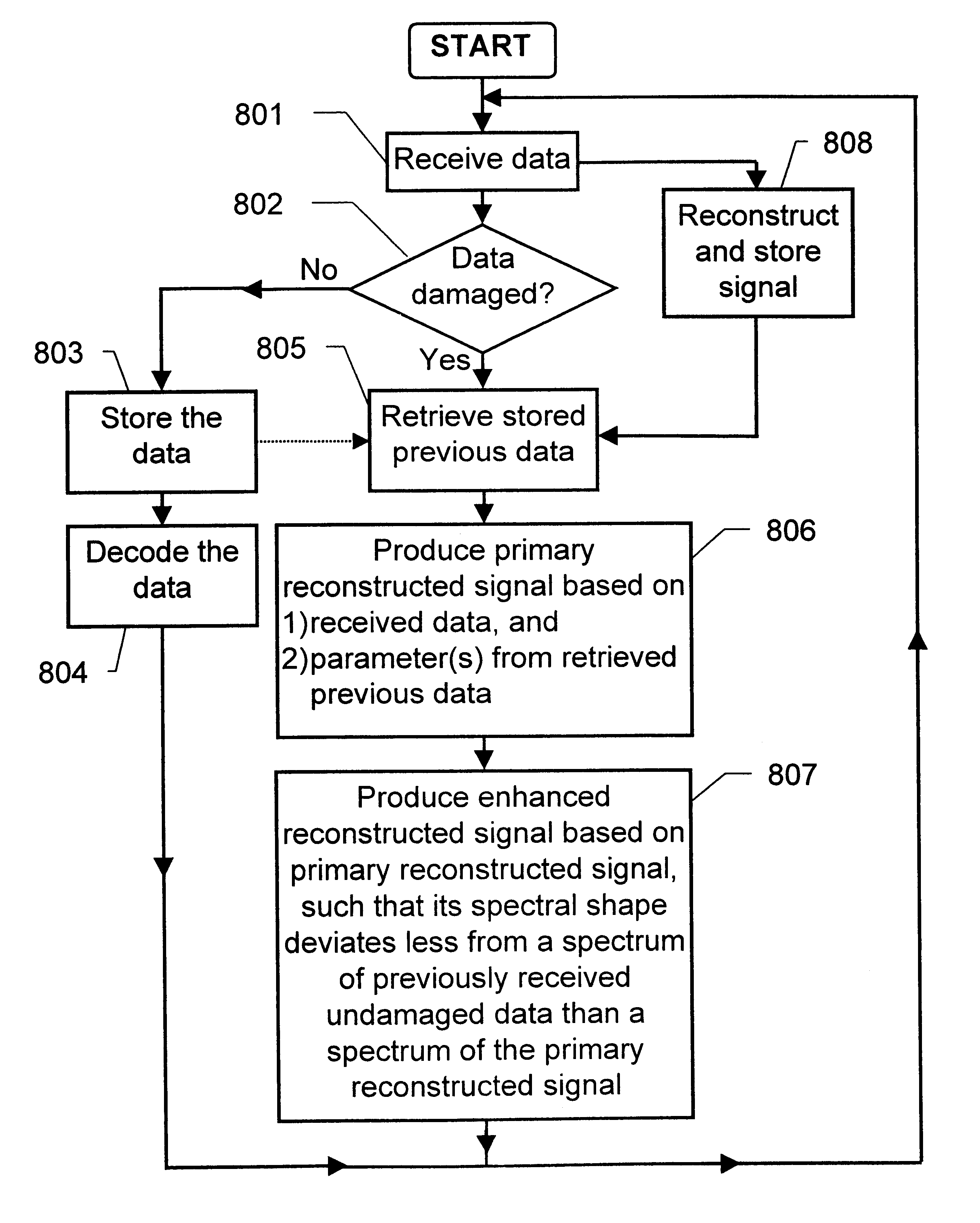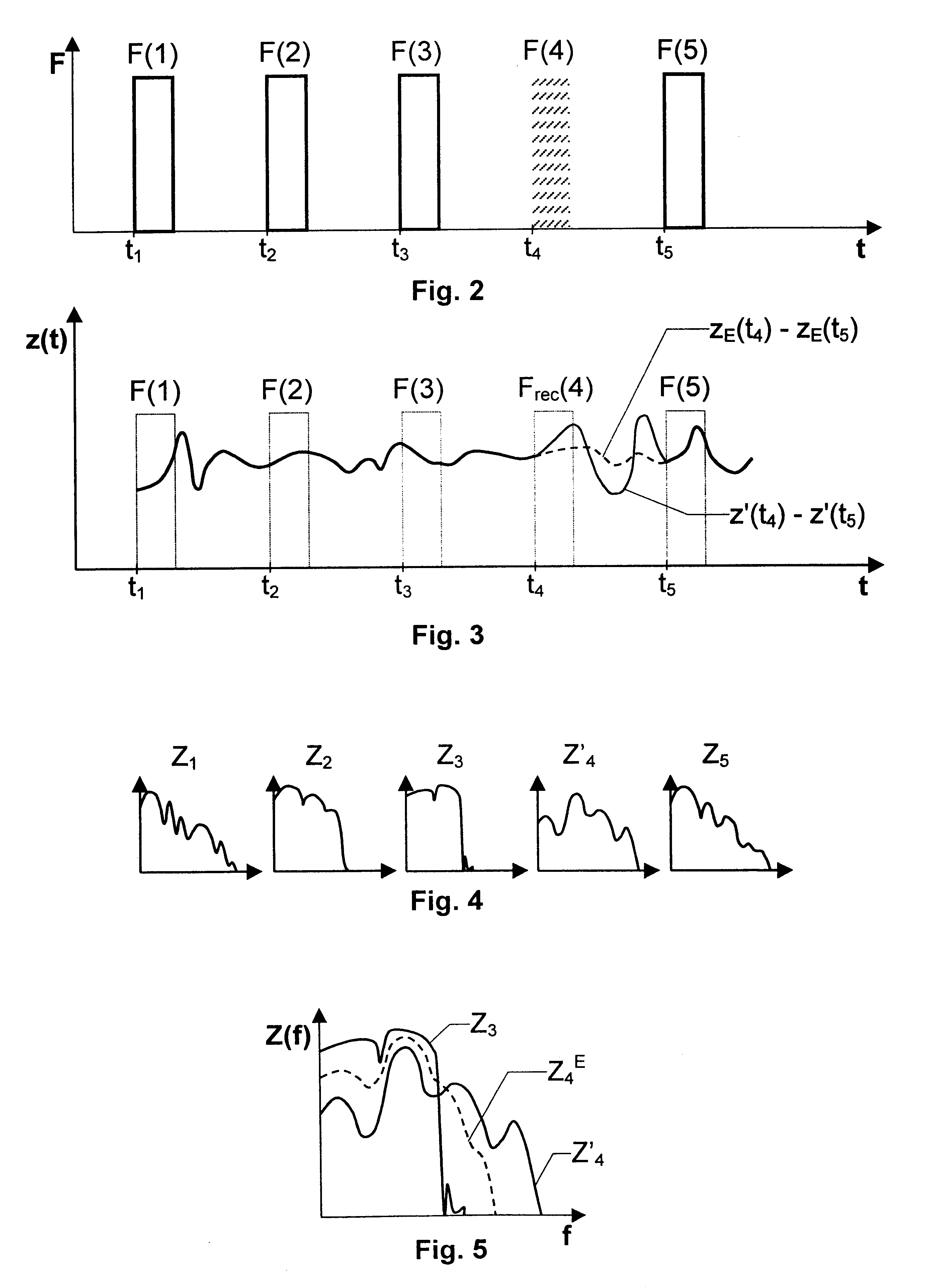Error concealment in relation to decoding of encoded acoustic signals
a technology of encoded acoustic signals and error concealment, applied in the field of concealment of errors in decoding acoustic signals, can solve problems such as power level limitation of the first correctly received frame after receiving one or more damaged frames, and codecs operating under adverse channel conditions
- Summary
- Abstract
- Description
- Claims
- Application Information
AI Technical Summary
Benefits of technology
Problems solved by technology
Method used
Image
Examples
Embodiment Construction
FIG. 1 shows a block diagram over an error concealment unit according to the invention. The object of the error concealment unit 100 is to produce an enhanced signal Z.sub.n.sup.E decoded from received data in case the received data is damaged or lost. The enhanced decoded signal Z.sub.n.sup.E either represents a parameter of a speech signal, such as an excitation parameter, or the enhanced decoded signal Z.sub.n.sup.E itself is an acoustic signal. The unit 100 includes a first transformer 101, which receives a primary reconstructed signal y.sub.n being derived from the received data. The primary reconstructed signal y.sub.n is regarded as a signal in the time domain and the first transformer 101 regularly produces a primary reconstructed frequency transform Y.sub.n of a latest received time segment of the primary reconstructed signal y.sub.n in the form of a first spectrum. Typically, each segment corresponds to a signal frame of the received signal.
The first spectrum Y.sub.n is fo...
PUM
 Login to View More
Login to View More Abstract
Description
Claims
Application Information
 Login to View More
Login to View More - R&D
- Intellectual Property
- Life Sciences
- Materials
- Tech Scout
- Unparalleled Data Quality
- Higher Quality Content
- 60% Fewer Hallucinations
Browse by: Latest US Patents, China's latest patents, Technical Efficacy Thesaurus, Application Domain, Technology Topic, Popular Technical Reports.
© 2025 PatSnap. All rights reserved.Legal|Privacy policy|Modern Slavery Act Transparency Statement|Sitemap|About US| Contact US: help@patsnap.com



